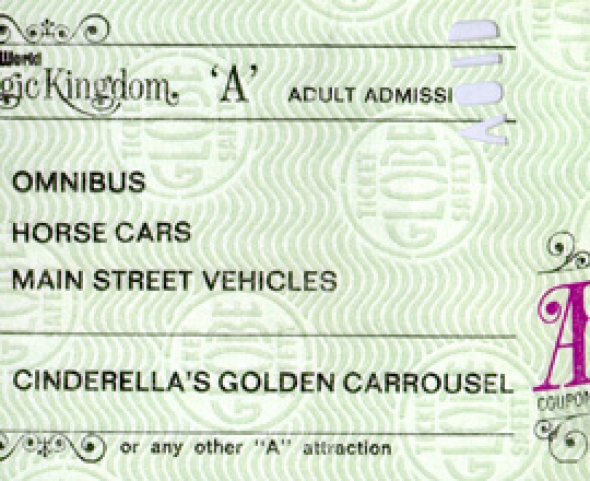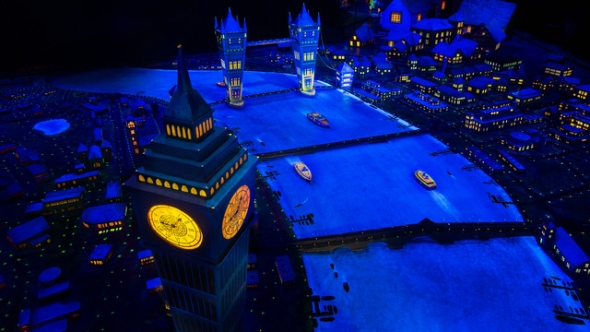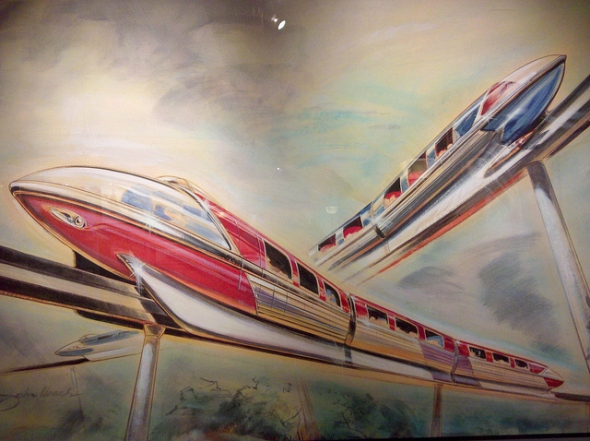
At certain Disney destinations like Epcot, park planners have categorized the various attractions in tiers. The best rides are in the top tier, while the older and less popular ones are in a lower tier. This type of hierarchical system is hardly new at Disney. Its roots trace back to the early years of the Happiest Place on Earth. Disney once sold ticket books, limiting the number of rides that theme park tourists could take during a given visit. And these tickets ranked from A to D until the year that everything changed. Let’s learn about the history of the E ticket Attraction.
The Value Book and the plussing problem
Image: DisneyIn the earliest days of Disneyland, Uncle Walt recognized a potential sticking point with his passion project. His park would receive more guests than some of the rides could handle. These attractions lacked the throughput to satisfy heavy demand. Disney was trying something that had never been done before, and they worried about traffic was that impossible to anticipate. The company needed sustained cash flow to pay for the park’s operation, too.
Their solution was the Value Book. This coupon book contained a series of tickets that would allow guests to take a trip on some of their favorite rides. They could ride anything so long as they had a ticket for it. Should these customers run out of tickets, they could always buy more, the brilliant part of the premise. Of course, not all Disney attractions are created equal. Some are better than others, and some have greater demand.
Image: DisneyUncle Walt and his team ranked these rides according to set factors. They ranked their original attractions from A (think King Arthur Carrousel) to C (think Peter Pan’s Flight and Snow White’s Scary Adventures). The following year, park planners introduced the D level of attractions. It’s not that they added anything new. It’s that they had enough to data to know which rides had the strongest demand. By default, those became the D ticket rides. They were the people’s choice and maintained that perception for several years.
The system had a catch, though. Walt Disney committed himself to the philosophy that his park should always aspire to improve. He wanted to plus all phases of the Disneyland experience. And that leads us to that old Spinal Tap discussion about how you top something that’s already at 10. What’s better than a D ticket ride? In 1959, Disney would reveal the answer…
The monorail and the Matterhorn changed everything
Image: DisneyOne of the most famous stories about the early days of Disneyland involved a cynical conversation that Uncle Walt overheard. One guest asked whether they should ride something, and the other replied that there was no point since they’d already ridden it before. That philosophy is hard to imagine today, as the best theme park attractions possess tremendous repeat value. In the earliest days of the industry, however, freshness required innovation.
In 1959, the Happiest Place on Earth completed its first major expansion, a blatant attempt to reinvigorate the park in the eyes of guests who had “ridden it (all) before.” This update included three attractions that would all become primary parts of Disneyland folklore.
Disney built a mountain, a submarine, and a monorail. As far as expansions go, Star Wars Land just can’t compete with that. The mountain is the legendary Matterhorn Bobsleds, the original theme park steel roller coaster. Disney constructed a full artificial mountain to complete the illusion that a person is sledding down the Matterhorn.
Image: DisneyThe submarine is a more complicated discussion. Initially entitled Submarine Voyage, it operated for almost four decades before closing in 1998. It later re-opened as Finding Nemo before its current designation as Finding Nemo Submarine Voyage. Disney spent a fortune on this ride, paying the modern equivalent of $5.6 million on the hulls of the eight-vessel fleet alone.
You already know about the monorail, arguably the most famous landmark at Disneyland. What you may not realize is that it wasn’t a form of transportation in 1959. Instead, it was an attraction that required a ticket. The Disneyland ALWEG Monorail served the primary purpose of taking guests on a sightseeing tour. It wouldn’t start transporting people from place to place until 1961.
Any of these rides would be a park addition on a par with Avatar Flight of Passage. In combination, the three attractions represented an unprecedented upgrade at Disneyland. And they necessitated an entirely new designation. With all due respect to Peter Pan’s Flight, it wasn’t on a par with a man-made mountain, a (mostly) authentic submarine, and a (soon to be) fully functioning monorail system.





Add new comment